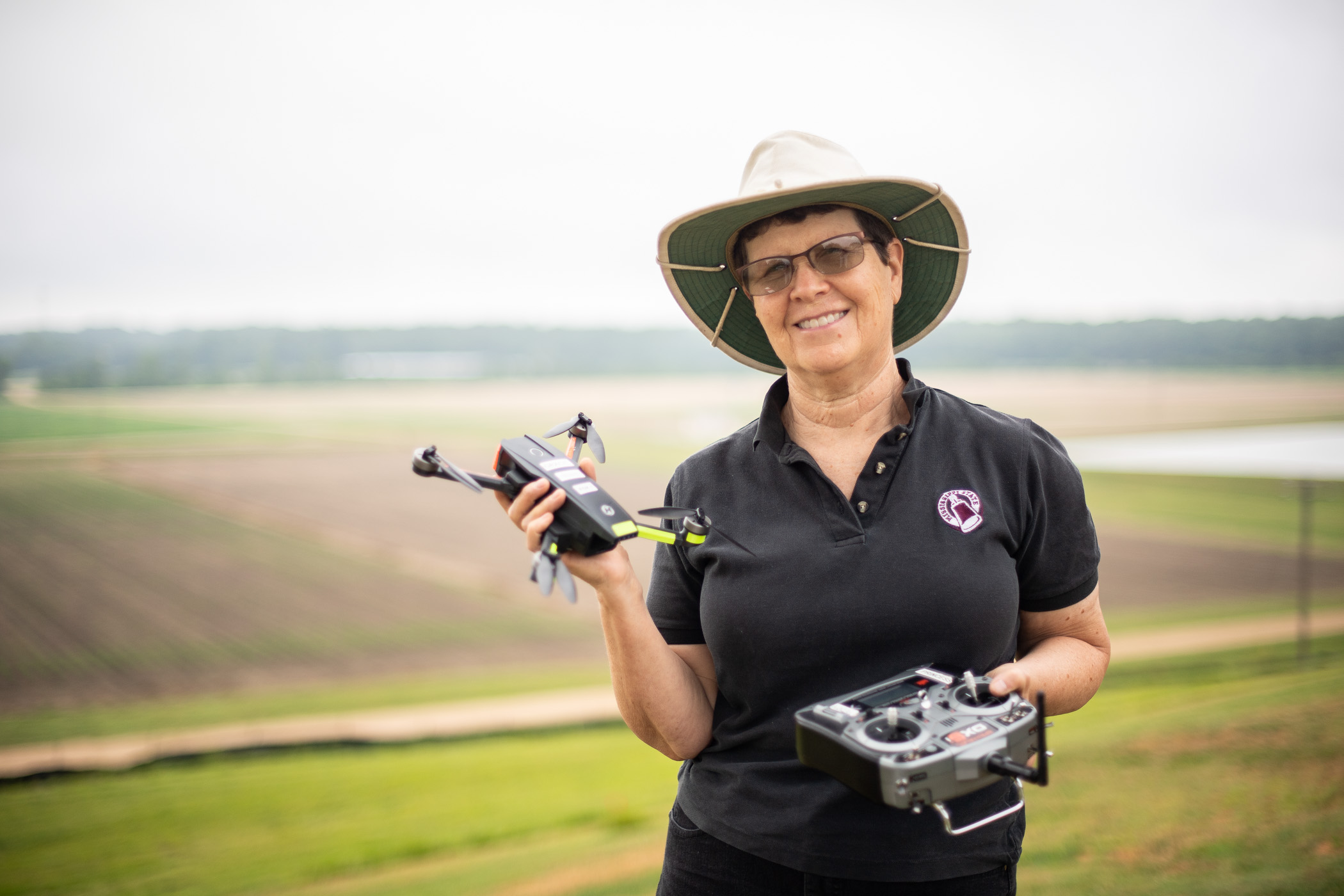Amelia Fox

When you’re named for an aviation pioneer, perhaps you’re destined for flight.
Amelia Fox, assistant clinical professor in Mississippi State’s Department of Plant and Soil Sciences, took her first discovery flight at age 13—and hated it.
“I soon realized that I was shooting through the air in a big chunk of metal and knew right away that I was not going to be a pilot,” she said.
While Fox’s undergraduate education in professional agriculture kept her feet firmly on the ground, her path to flight began in graduate school focusing on geographic information systems, or GIS, and remote sensing—skills that brought her from the Midwest to Mississippi to aid with the 2010 Gulf Coast oil spill cleanup.
Fox decided to stay in Mississippi to pursue a doctoral degree in agronomy from MSU where her imagination soared as she learned about early agricultural research and its connection to GIS and remote sensing technology. She sensed drones would do big things with GIS in the future and took the leap into this emerging field.
After graduating in 2015, she returned to her Washington state home to train with a chapter of the Bell Air Flyers, an organization affiliated with the Academy of Model Aeronautics. Undergoing rigorous training, Fox honed her skills and became a certified FAA remote pilot with the AMA and an FAA- and AMA-certified pilot instructor.
Fox, from a multi-generational military family, said drones have been a part of the U.S. military for longer than one might think.
“The academy has trained drone pilots for the last hundred years,” she said. “And yes, these aircraft have been around that long. In World War II, Norma Jeane Dougherty—better known as Marilyn Monroe—built drones for the U.S. Army.”
The wings of opportunity soon led her back to her alma mater where she has had the chance to be a leader in the MSU’s precision ag program, developing and teaching the UAV curriculum. Fox has taught and expanded her unmanned flight course over the past five years, recently adding a classroom virtual reality drone experience that facilitates hands-on learning without the risk of damaging expensive equipment.
Fox’s years of teaching flight instruction have inspired her latest research project, in which she partners with department colleague Jagman Dhillon and faculty from the University of Texas-Arlington to assess why student pilots gravitate toward a particular type of UAV.
“There are two common types of unmanned aircraft: fixed-wing planes and rotocopters,” she said. “Students usually prefer one type of aircraft, and we have found that certain personality traits drive that preference.”
Fox found that students usually labeled “inattentive” typically enjoy flying fixed-wing planes.
“These students can see everything at once: the sky, ground, direction and the attitude (alignment) of the plane—they see it all while moving their hands at the same time,” she said. “While highly focused and academically stronger students gravitate toward the rotocopters.”
This Independence Day, Fox celebrates the birthday of her husband, a veteran who flew for the U.S. Navy. Fox’s children and her father also served in the military. Now a V.A. caregiver, she thinks a lot about preparing the next generation of both civilian and military pilots.
“The commercial and military flight corps are already using a psychometric approach—testing skills, knowledge and personality—to select pilots.” she said. “I think that our study shows that the aviation field needs a broad array of personalities who can team up and complement each other.”